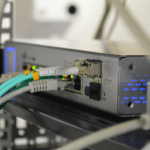By: SEO Mavens
Puneet Singh is one of the leading forces behind the change in an era when telecommunication is changing at unheard-of speed. A visionary leader and distinguished AI specialist, Singh has led the front-edge mix of innovation and technology to transform the telecoms sector. His innovative work in artificial intelligence (AI) transforms everything from network efficiency to customer experience, improving innovative and efficient telecom services. Singh is following market trends and setting them with an unrelenting quest for fresh opportunities. This paper investigates how Puneet Singh uses artificial intelligence and creative ideas to propel the telecoms industry into a fresh phase of expansion and development.
Puneet’s Professional Journey and Vision
Passion for invention and a thorough awareness of artificial intelligence (AI) define Puneet Singh’s path in the tech sector. His technological expertise and leadership have advanced the industry by helping to successfully include artificial intelligence in fields such as network management, automation, and customer service. Particularly in telecommunications, Singh’s work has brought him many honors and recognition as a prominent artificial intelligence innovator.
In the future, he sees artificial intelligence revolutionizing the telecom sector and tackling long-standing problems, including scalability, network optimization, and user experience. Emphasized in TechBullion, his forward-looking attitude centers on using artificial intelligence to propel ideas, including 5G, the Internet of Things (IoT), and improved cybersecurity. Through his work, Singh has positioned the telecoms industry at the forefront of worldwide technological developments, securing its leadership in the digital age.
The Role of AI in Revolutionizing Telecommunications
Enhancing Network Management and Customer Service
AI’s Part in Transforming Network Management and Customer Service in Telecoms
Artificial intelligence (AI) drastically changes how networks are run and how telecom firms handle consumer interaction. Automating routine maintenance chores and identifying possible problems before they become more severe and artificial intelligence technologies—including predictive analytics and machine learning algorithms—improve network performance. Through extensive data analysis, AI-driven tools may predict network congestion and apply corrective actions, therefore aiming for better and more consistent service. AI chatbots and virtual assistants offer fast support in customer care, effectively addressing routine inquiries and problems, thus improving general customer happiness and lowering the demand for human involvement (TechAnnouncer reference).
Singh’s Efforts in Including AI Into Telecom Systems
Integrating artificial intelligence into telecoms infrastructure has been much aided by Puneet Singh. His creative ideas have produced and put into use cutting-edge artificial intelligence solutions enhancing customer interactions, operational process automation, and network management. Singh’s initiatives have greatly improved the dependability and efficiency of telecom services by use of artificial intelligence technologies enabling real-time data analysis and adaptive network optimization. His efforts show a strong will to use artificial intelligence to solve certain difficulties the telecoms sector faces.
Practical Cases of AI Application
A number of actual cases show how artificial intelligence is changing telecoms. Driven by artificial intelligence, predictive analytics lets telecoms see and fix network problems before they impact consumers. AI systems can, for example, use past data to project times of maximum use and modify network resources in line. AI systems examine transaction trends in fraud detection to spot and stop dishonest behavior, therefore protecting the business and its consumers. These AI uses not only improve operational efficiency but also offer a more secure and responsive telecom environment, highlighting the transforming power of artificial intelligence in the sector.
Key Innovations Under Puneet Singh’s Leadership
AI-Powered Tools and Systems
Several AI-powered tools Puneet Singh developed have transformed communications. TechBullion notes that among these developments are sophisticated predictive analytics algorithms that maximize network performance and forecast problems. Singh’s instruments improve operational effectiveness and service dependability, therefore signifying a major advance in artificial intelligence integration.
Predictive Maintenance and Network Optimization Automation
Singh has also pushed predictive maintenance and network optimization automation. TechAnnouncer emphasizes how his AI-driven solutions track network performance in real-time and change settings to maximize effectiveness and lower downtime. Under Singh’s direction, predictive maintenance algorithms predict equipment breakdowns, therefore enabling preemptive repairs and assuring a more robust telecom infrastructure.
In Summary
Puneet Singh’s revolutionary contributions to the telecoms sector via artificial intelligence innovation His innovative efforts combining artificial intelligence-powered tools and automation have greatly improved customer service, predictive maintenance, and network management. Singh is changing the telecom scene by tackling long-standing industry issues and establishing fresh standards for dependability and efficiency. His forward-looking strategy aims that the sector not only maintains up with technical developments but also leads the way in worldwide communications invention. Singh’s impact will remain a major driver of advancement as telecommunication develops, therefore determining the course of digital infrastructure and connectivity.
Published by: Holy Minoza



















